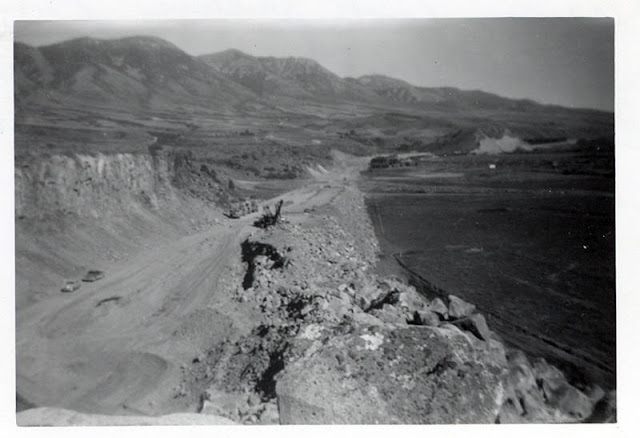On June 29, 1956, President Dwight Eisenhower signed the Federal-Aid Highway Act of 1956. The bill created a 41,000-mile “National System of Interstate and Defense Highways” that would, according to Eisenhower, eliminate unsafe roads, inefficient routes, traffic jams and all of the other things that got in the way of “speedy, safe transcontinental travel.” At the same time, highway advocates argued, “in case of atomic attack on our key cities, the road net [would] permit quick evacuation of target areas.” For all of these reasons, the 1956 law declared that the construction of an elaborate expressway system was “essential to the national interest.”
Little did my family know that this would be a major change in our lives. The rumors were flying around our small village of Inkom, Idaho in 1960 when the surveyors began plotting the route that the Interstate 15 would take through our village of 380 citizens.
Everyone was quite surprised however, when the route chosen went through the east side, splitting the town in two. There was only one engineering hurdle standing in the way of construction - a wall of basaltic lava 400 ft. or so high. The road bed would be cut through this monolith at its tip above Stuart's Dairy Farm, dividing the lava flow, and leaving a monument on the western end, as seen below.
The work took months of blasting with dynamite and heavy equipment to haul away the chunks of basalt to be used for the road bed which would be elevated most of the way through Portneuf Gap.
You can see (above) how the construction proceeded into 1963. This photo was taken by Lena Sexton from the Sorrell Creek dugway. Our family house can be seen on the left, at the base of the road bed. Construction took our barn, pasture, and corrals. The Feds paid my father for the land prior to construction and with that money, he and my brother purchased acreage further up Rapid Creek Road.
I was only 7 years old when the blasting and construction began in 1961. Every afternoon, except Sundays, at 4:00 p.m. the sirens would sound alarm. Homes close to the detonation area would open windows and doors to keep the shock-waves from the blast from blowing out said doors and windows. Then the belly-dumps would move in working night and day to clear the rock.
By 1964, my father had sold our house and we moved a mile up the road. The new house was a major change for our family as we all ended up living on Helmandollar Drive.







No comments:
Post a Comment